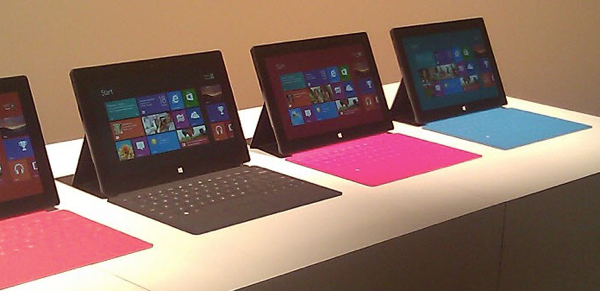Windows RT: DOA to almost everybody


No doubt Microsoft knew there would be some market confusion when it released the version of Windows 8 designed for tablets using the ARM processor. This processor is inside nearly every tablet not running a version of Windows, so Microsoft needed to get Windows running on it to be competitive. The engineers in Redmond did that, but they crippled it in a way that kills its usefulness for most consumers.
My colleague Larry Seltzer of ZDNet thinks that while it may not resuscitate Windows RT in the market, the probable appearance of new devices running Windows RT for the holiday season might kick-start sales. He may very well be correct that this scenario could get devices with Windows RT flying off the shelves, but I don't think that's likely.
Microsoft has two problems with Windows RT that hobble it when it comes to getting big sales. One of those problems is of its own making, and it's stuck with it. The other is more insidious, as it's a perception thing that will never go away.
It's about the apps, indirectly
The first reality that kills off Windows RT is the inability of the user to install any Windows app that hasn't been released specifically for the Metro side of Windows 8. This has been blasted all over the web since details of Windows RT first appeared, so I won't rehash it yet again. This is a serious problem that keeps prospective buyers away in droves.
The Metro lockdown of Windows RT is the primary reason that tablets running it will not be considered for the enterprise, nor by the tech-savvy consumer. There is simply no way to justify buying a tablet with Windows RT inside over a full Windows 8 solution. The RT models may be cheaper, but not cheap enough to force reliance on Metro apps.
That's a serious situation, as the enterprise/power user market segment is a natural fit for Windows tablets. Devices running full Windows 8 will probably sell OK to them, but Windows RT will not be considered. The abysmal sales of Microsoft's own Surface RT bears witness to this.
Mainstream consumers, the group that tablets running Windows RT is aimed squarely at, aren't buying them either, and never will. There's that confusion thing that intrudes on the buying process. RT is Windows 8, sort of, and prospective buyers no doubt get turned off by the restriction of installing apps.
The regular consumer might not realize that's a generic problem, but they do recognize the specific one. They'll ask the sales rep if they can install iTunes on the nice Windows RT tablet they are considering purchasing. Or perhaps they ask about running Firefox or Chrome, their favorite browser. Maybe the app they inquire about running is an app for their kids.
Whatever the app they need to run might be, if the sales rep is knowledgeable, they'll give the proper answer that no, your app cannot be installed on Windows RT. Or worse, and this is supposedly happening more than we think, the rep tells them incorrectly that sure, that app can be installed on this Windows RT tablet. Of course, in the latter case, that Windows RT tablet is going to come right back to the store.
Don't misunderstand me; I'm not saying that devices with Windows RT won't appeal to anybody. I know folks who are quite happy with them. They are in the minority by a wide margin, however, and that's not going to change.
It's not real Windows
The second problem Microsoft faces with Windows RT is one of perception. To the average consumer, those who buy things like tablets but know little about the technology, Windows RT is not a real thing. Unlike every version of Windows that's come before it, there are no boxes of Windows RT in retail stores. There is no upgrading their existing hardware to Windows RT. The only way to get RT is to buy a shiny new tablet (or other device) that has it preinstalled and ready to go.
Those of us familiar with how this stuff works understand that's the way it is, but the takeaway for consumers is that Windows RT is not like Windows as they know it. It's not available to them as an OS by itself; it only exists on devices they buy. Microsoft doesn't name it in media ad campaigns, it's just Windows. That's not enough to sound alarms that it's different from "real" Windows. When the app restriction is mentioned in the store that kills the deal if there is any remaining doubt about the Windows RT tablet under consideration.
Good hardware, not enough Metro
Even though OEMs have been reluctant to build Windows RT tablets, Microsoft's own Surface RT leads the pack. It's good hardware done right, but the shortcomings of Windows RT compared to "full" Windows 8 have kept buyers away. That's not going to change unless Microsoft addresses both the actual shortcoming of RT and the perceived one.
Price alone is probably not enough to get buyers to get a Windows RT tablet, but it's a start. That's one reason the Surface RT is now a lot cheaper than when it was introduced. The question is how low must pricing go to get buyers to look past the shortcomings of RT.
Related stories: